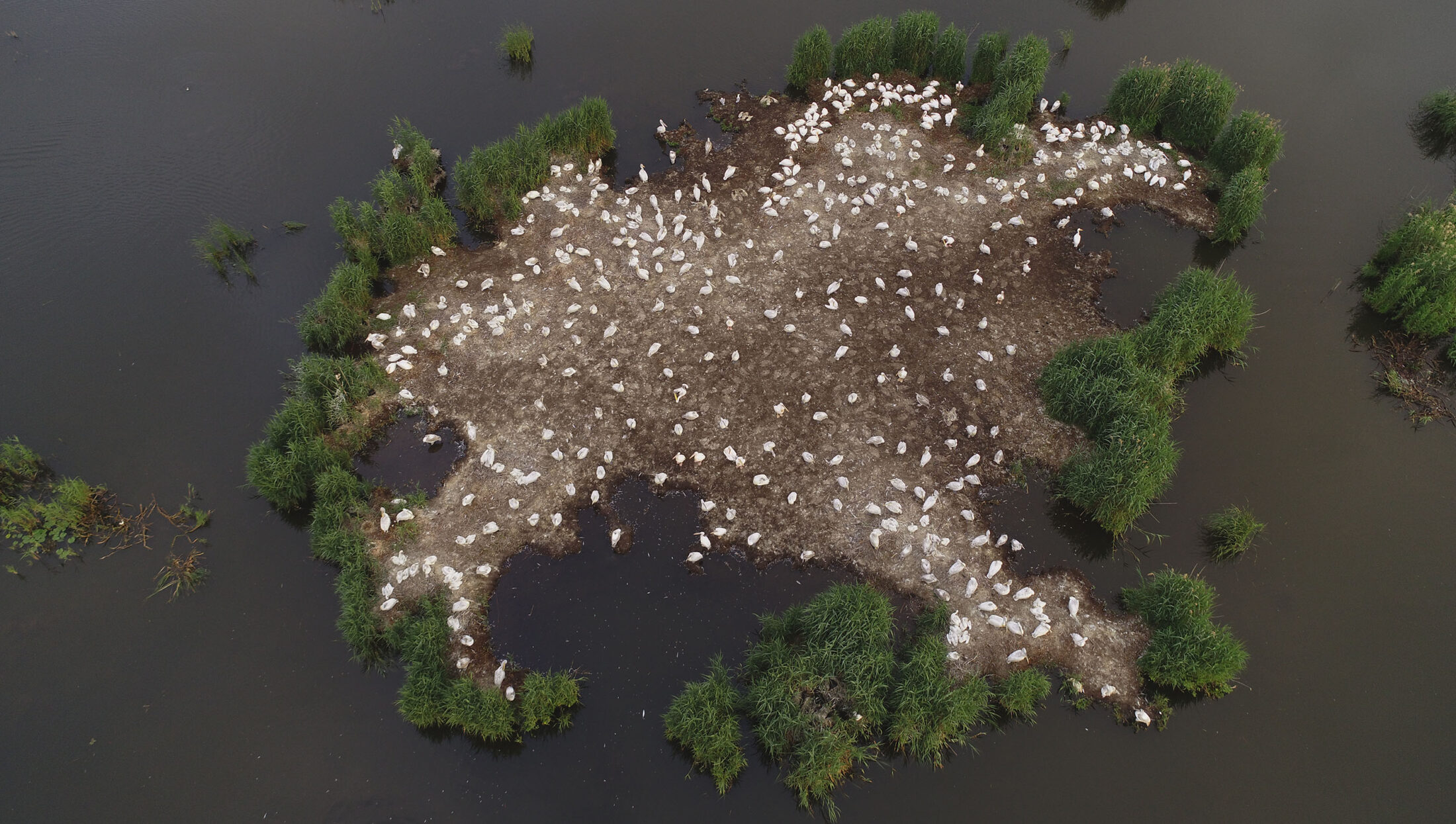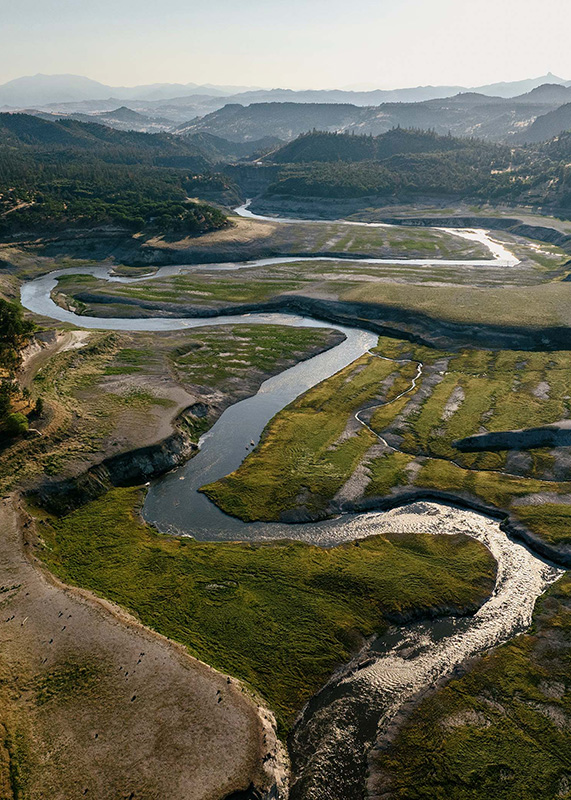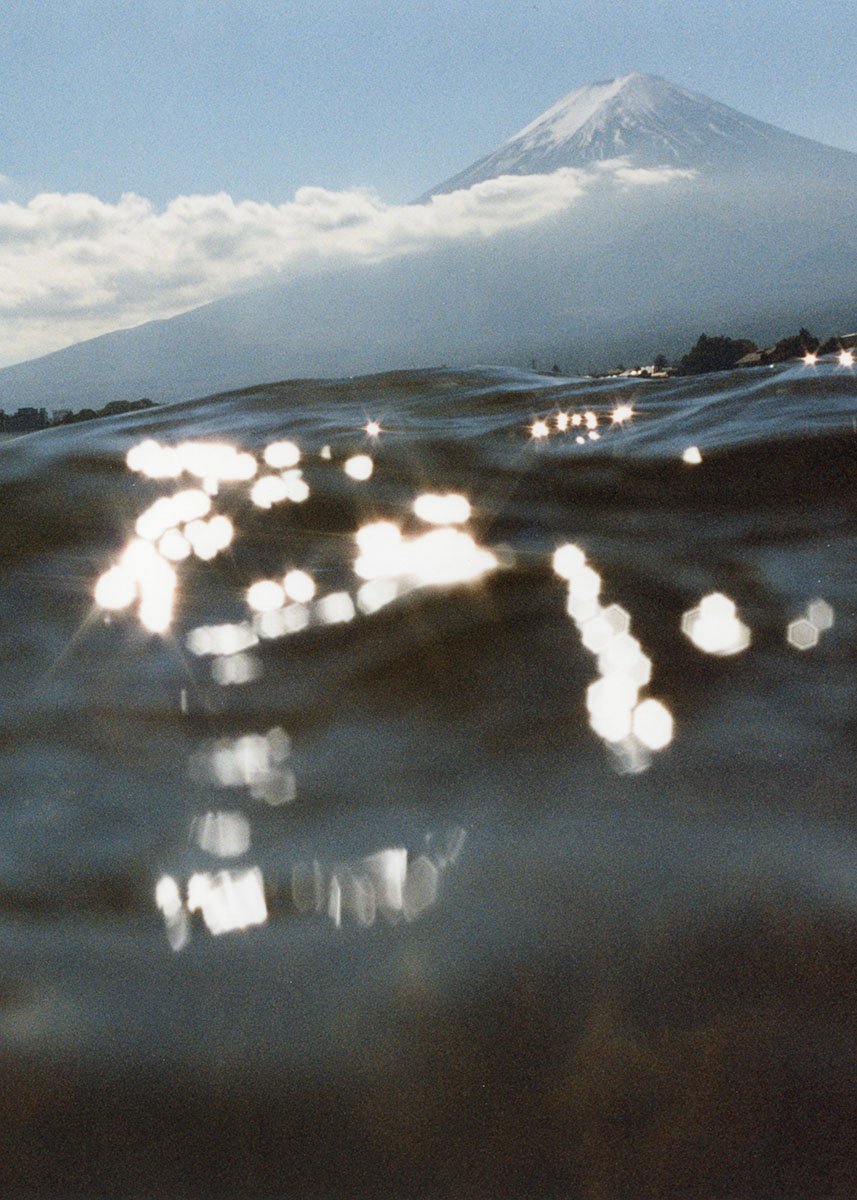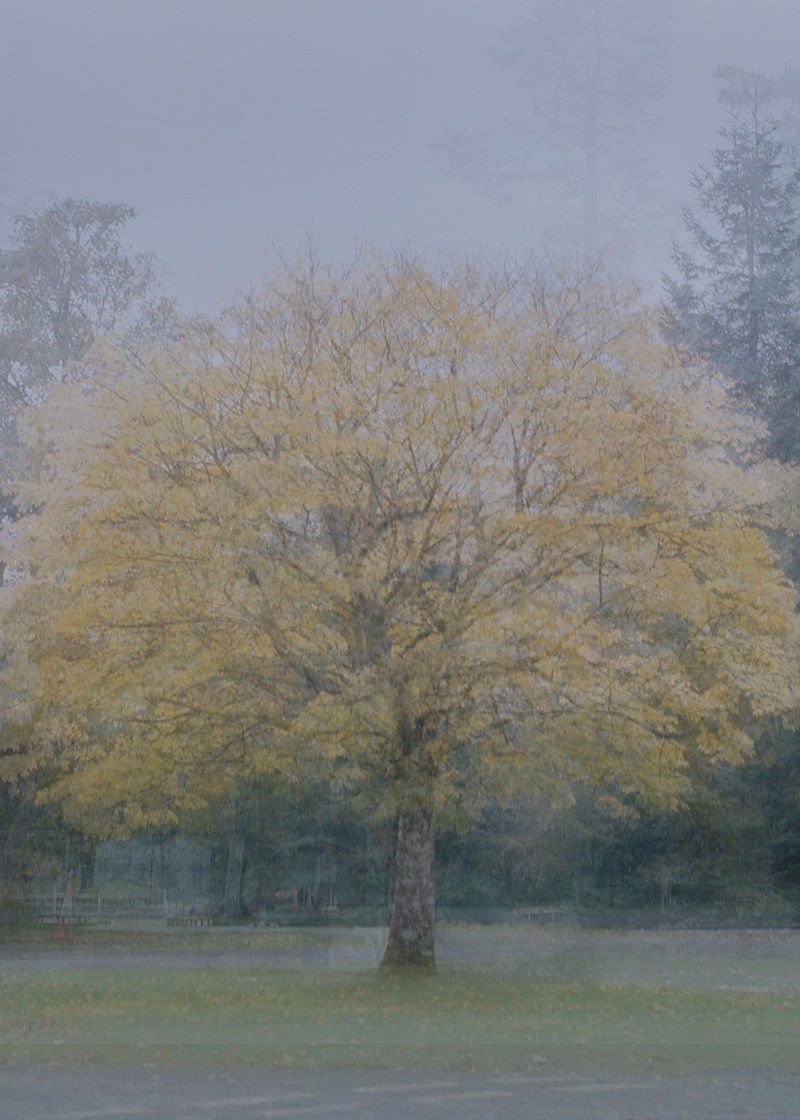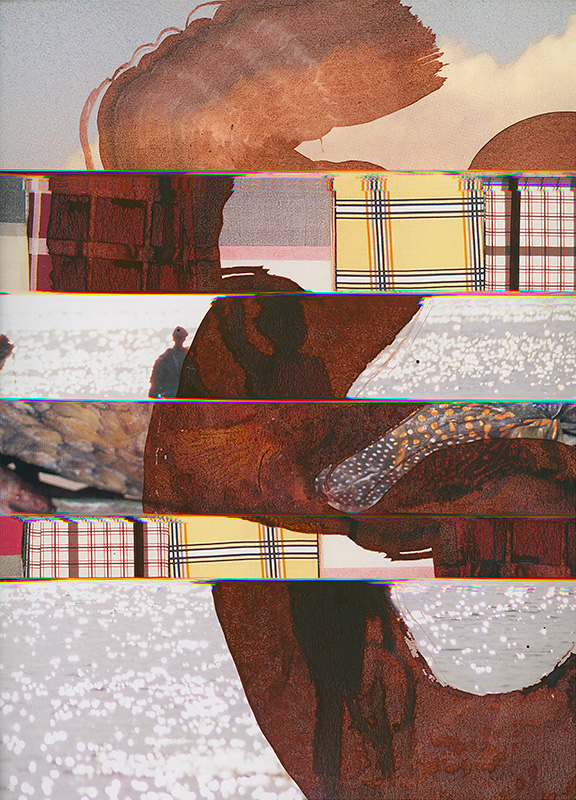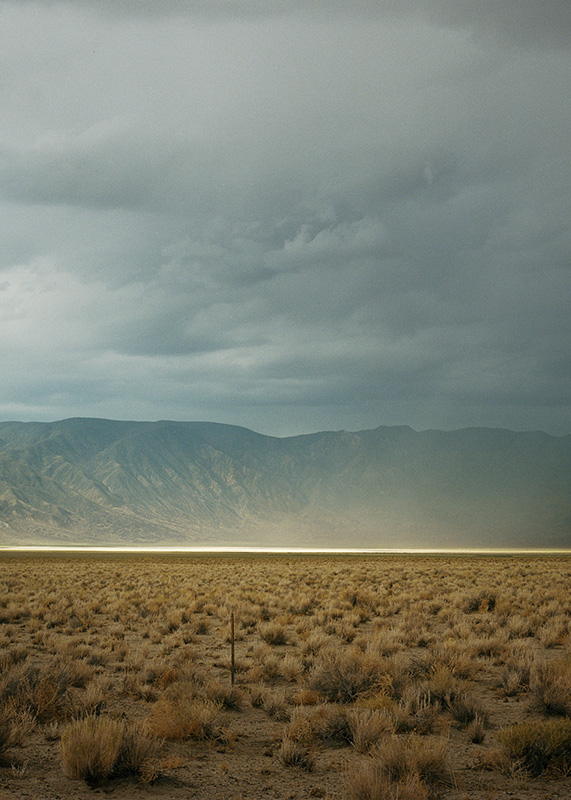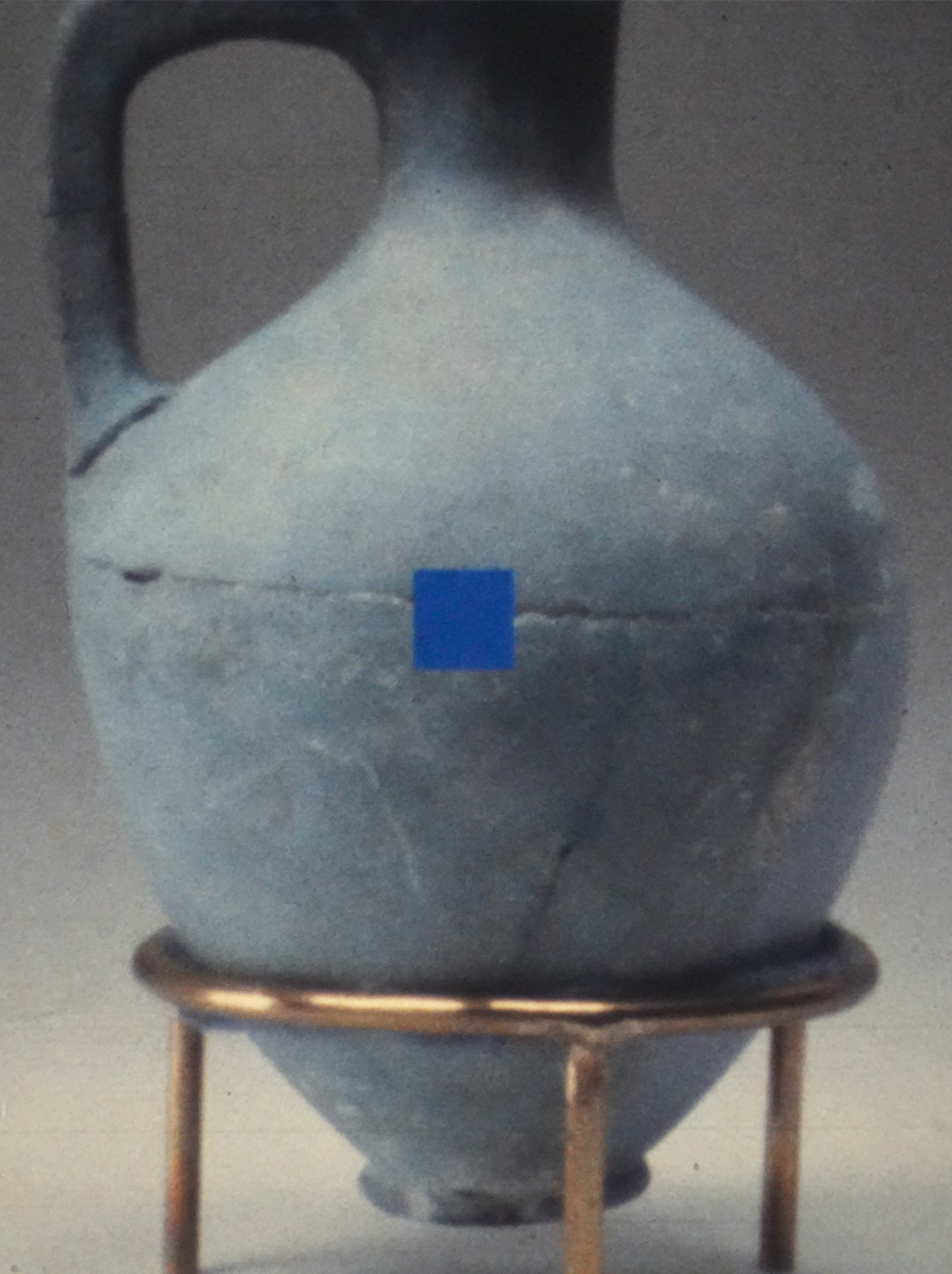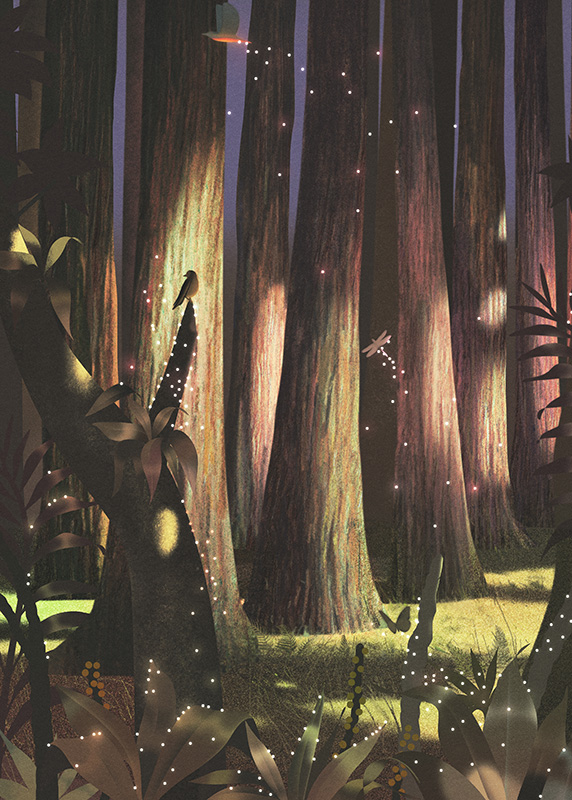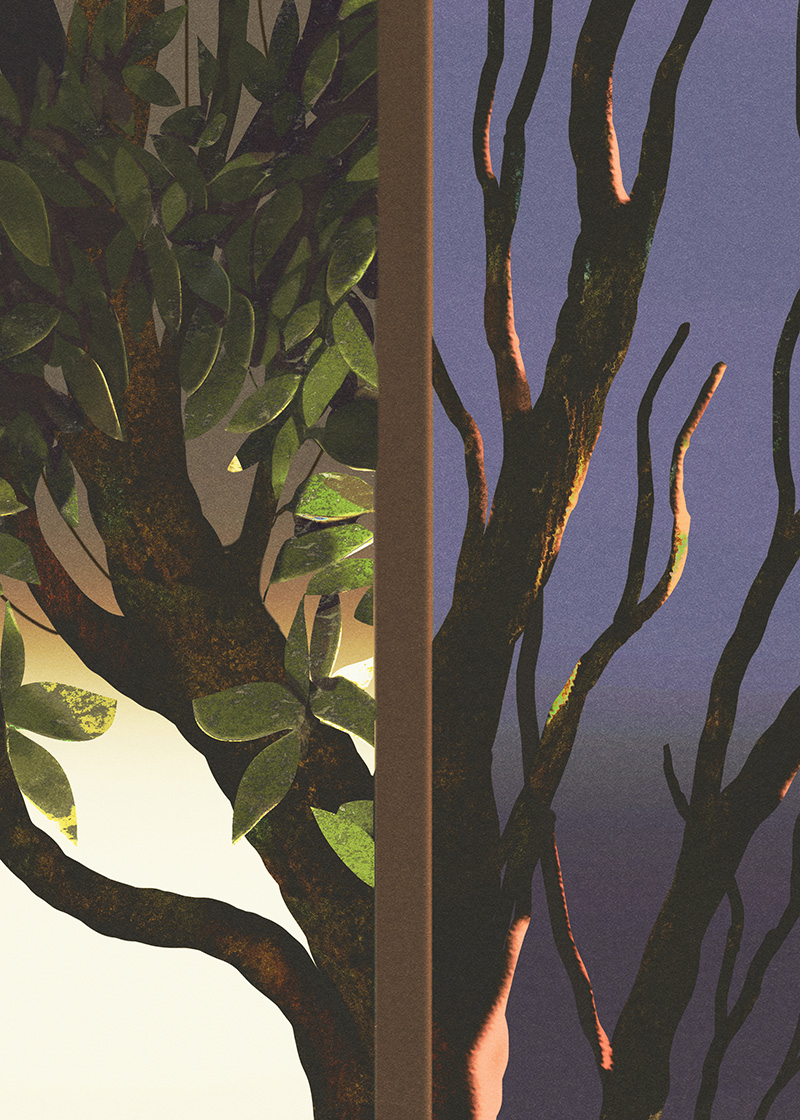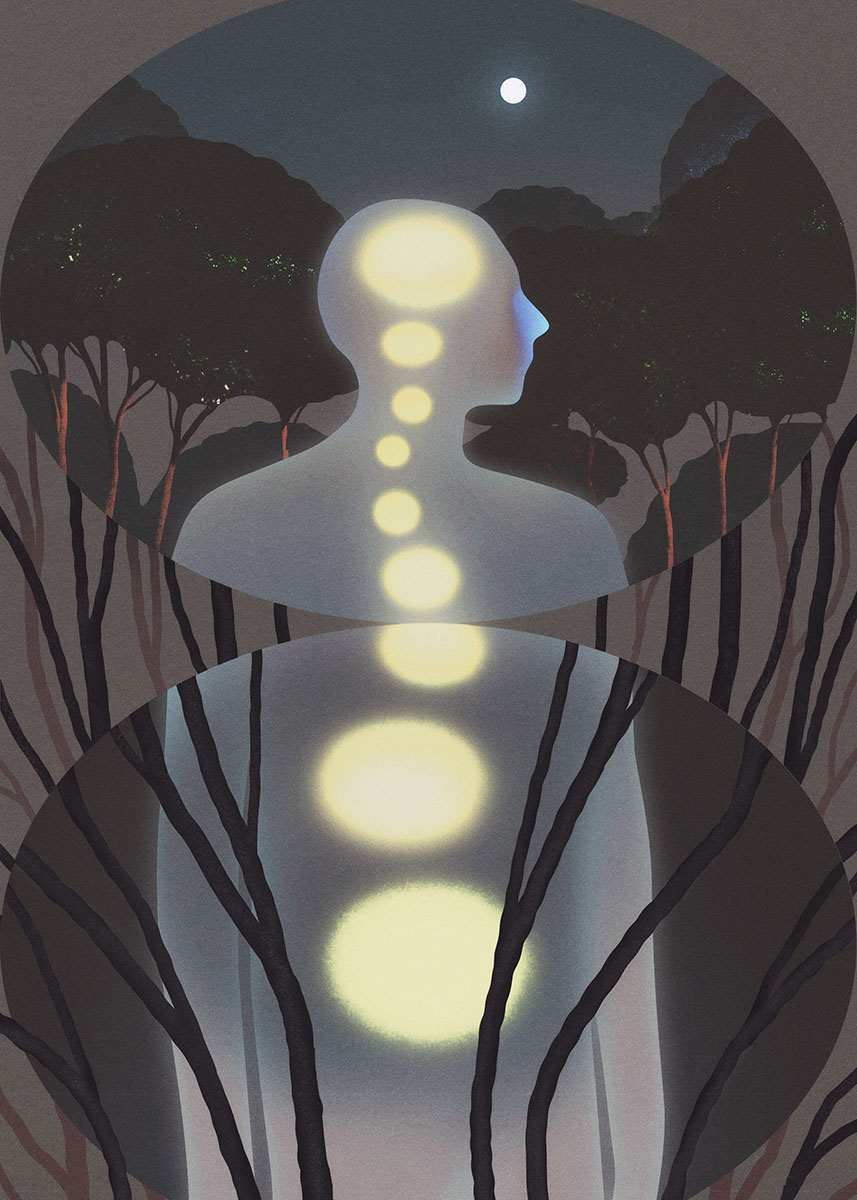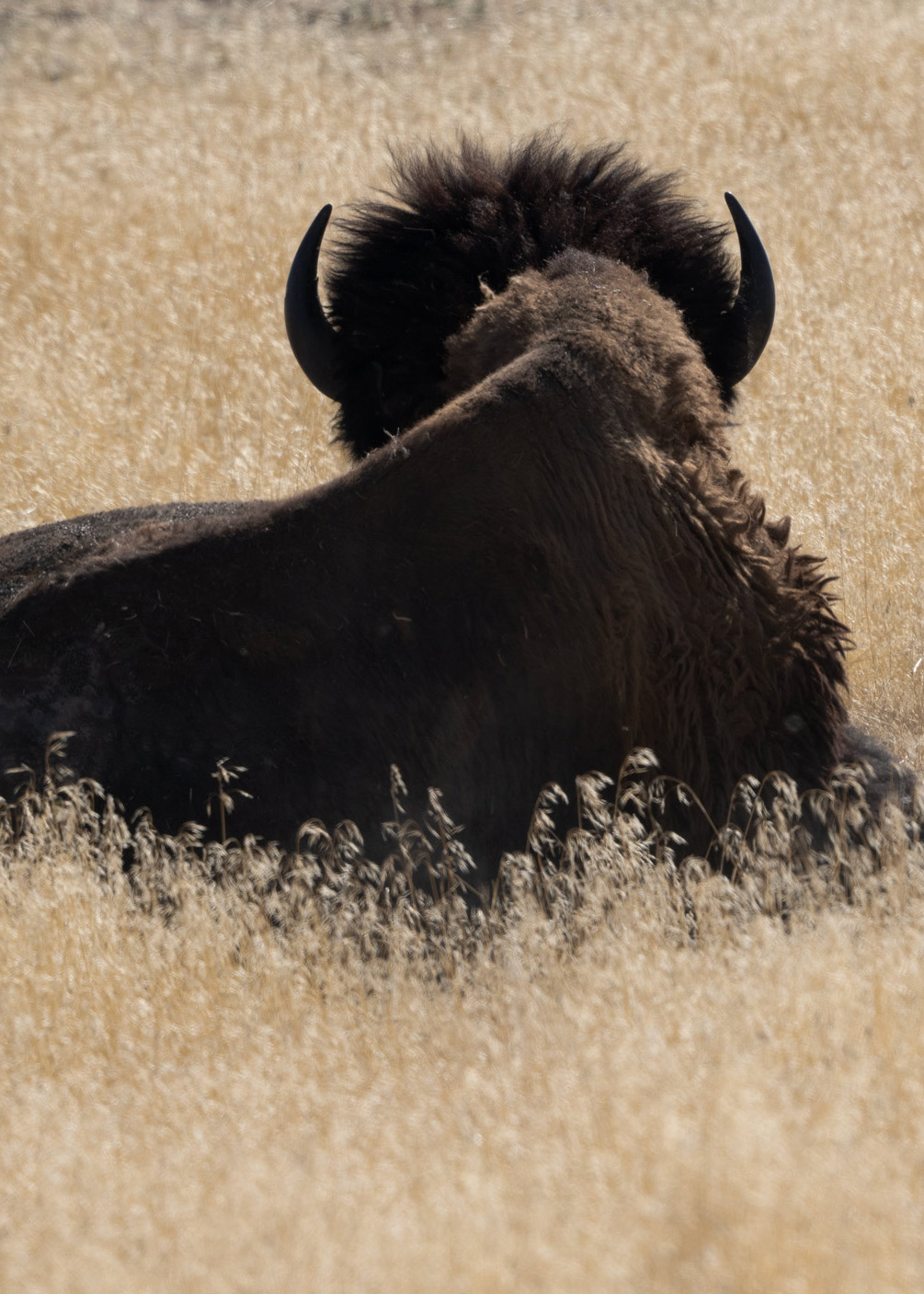
Julian Hoffman is the author of The Small Heart of Things, winner of the AWP Award Series for Creative Nonfiction, and Irreplaceable: The Fight to Save Our Wild Places, a Highly Commended Finalist for the 2020 Wainwright Prize for Writing on Global Conservation. His writing has appeared in Lush Times, EarthLines, Kyoto Journal, The Redwood Coast Review, and Southern Humanities Review. He lives in a mountain village beside the Prespa lakes in northwestern Greece.
From the shores of the Prespa lakes in northern Greece, Julian Hoffman witnesses the drastic decline of Dalmatian pelicans as they succumb to the recent outbreak of avian influenza. As the wetlands fall strangely quiet, he senses the porous boundaries between our health and that of the ecologies we inhabit.
The islands are mantled with dead pelicans, like a late fall of snow. In the low light of a March afternoon, I’m standing on a small hill that commands clear views of the wetland and its dense reedbeds. By now, the great surging clamor of the world’s largest colony of rare Dalmatian pelicans should be in full swing: birds continually lifting from the lake waters or lowering on vast wings through the thin mountain air to jostle for space on the increasingly crowded isles. Instead, the dark water is whitened by a mass of floating carcasses. And the islands of detached reedbed on which some 1,400 pairs of this remarkable species typically breed are saddled with slack birds. They seem strangely flat from a distance, as though life has been pressed out of them by a great, immovable weight.
When the first dead Dalmatian pelicans were discovered on Lesser Prespa Lake in northern Greece, they numbered only 11. A large enough figure to take note of but not be unduly alarmed by, given that deaths from natural causes are a common fact of life in busy wetland breeding colonies. That was February 17, 2022. A week later, mortalities had reached 209. By then, tissue samples gathered from the original pelican carcasses had revealed the cause of death as H5N1, or highly pathogenic avian influenza (HPAI). On March 9, just three weeks after the first deaths had been recorded, the figure had rocketed to 1,003. Witnessing the terrible trajectory of these numbers, it was hard not to draw parallels with the early days of the Covid-19 crisis, when mortality figures rose with staggering exponentiality. And as with the pandemic, the rising death toll on the Prespa lakes from avian influenza wouldn’t stop there.
Through my telescope I scan the wetland, where movement is largely limited to the more secluded parts of the dispersed colony. Panning from left to right, I eventually land on an islet entirely wrapped in dead birds. But there’s a single living Dalmatian pelican too, starkly alone and standing on the curving white summit of its deceased kin. Up close through the lens, I linger on its tousled head feathers and the sword-like beak, whose pouch has turned strikingly brick-red for the breeding season; I see how its eyes are the color of old ice. Several minutes later, I realize that I’m still focused on this one pelican, motionless on its mount. I’m not sure why it’s absorbing so much of my attention except that in standing alone it has become more symbolic, emblematic of wild resilience or fragility. Or perhaps I’m subconsciously projecting onto it the role of witness to the devastation. But then it hits me with sudden force why I’m so fixed on this particular bird—it’s because in all likelihood it’s already been condemned to join those beneath it in a heap. Without a radical change in circumstances, it’s unlikely this bird will survive the coming days, because the persistently cold temperatures and scant light of late winter this year have conspired to make conditions ideal for the transmission of avian influenza. By staying true to a lake that’s encoded as home in its tissues and bones, it’s almost certainly doomed to die. And it’s heartbreaking to be privy to such grim inevitability.
For more than two decades now I’ve lived alongside the pelicans of the Prespa lakes in northern Greece. These birds are—for so many, residents and visitors alike—simply an astonishing and seamless part of being here. There is no Prespa without pelicans. In summer, the skies brighten with their flights, as hundreds of birds, their wingspans as great as three and a half meters when fully extended, catch warm thermals generated by the earth, tracing rising circles into the endless blue above. Or they’ll skim so close to the lake that they’re doubled as if in a mirror, held there by a phenomenon known as ground effect, when an invisible cushion is created by air flowing into the space between a bird’s wings and the surface of the water. Even when you know the science behind what holds them in place, the sheer poetry of the motion feels like they’re suspended solely by a spell.
But pelicans weren’t always considered so convivial and wondrous a neighbor here. There was a time when the Greek government offered a bounty on them—50 drachmas for a dead bird and 5 for an egg—in the mistaken belief that pelicans competed directly with fishermen for the same quarry. The fishermen of Prespa, living a long way from the nearest municipal offices where they could easily deliver their proof, often just broke up the nests and smashed the eggs and any young birds instead. But the fortunes of the Dalmatian and great white pelicans of Prespa began to slowly and unexpectedly change in 1971, when Greece’s right-wing junta regime, which had claimed power in a coup in 1967, granted the region protected status as a nature reserve precisely because of the significance of its waterbird colonies. The declaration was, in part, an attempt by the military dictatorship to gain credibility with European governments by casting themselves in a favorable light at a time when the regime’s horrific human rights abuses justly garnered most of the international attention, but primarily it was a testament to the formidable resolve and persuasion of the Swiss conservationist Luc Hoffmann.
Hoffmann was drawn to the Prespa lakes when French biologists in the late 1960s finally identified the remote basin as the home of pelican colonies long speculated about by European scientists. By then, Hoffmann, a founding member of the World Wildlife Fund and the Ramsar Convention on Wetlands, had already begun making a positive impact on international wetland preservation, using his ornithological training and considerable wealth to help protect places of significant biodiversity by encouraging local conservation initiatives through a mixture of scientific study, community involvement, and awareness-raising. It was these efforts of his and fellow conservationists that led not only to the declaration of Prespa as a protected area, a status that was upgraded to the level of national park in 1974, but to the eventual founding of the Society for the Protection of Prespa (SPP) in 1991, a nonprofit environmental organization dedicated to the preservation of the lakes’ natural and cultural wealth.
The Prespa lakes, shared by Greece, Albania, and North Macedonia, are among Europe’s oldest bodies of water, dating back some 3 to 5 million years. Given their antiquity, it only seems right that these lakes should be a haven for pelicans, one of the most ancient families of birds still in existence on the planet. Fossil finds in France have shown that the skeletal structure of pelicans has remained virtually unchanged over the past 30 million years of evolutionary adaptation, explaining why the eight modern pelican species scattered across the globe today share the same fundamental morphology as that of their earliest ancestor. And for those who visit the colonies, seeing these birds soaring on wings so large that they eclipse the sun when passing in front of it, their bayonet bills strangely archaic for such elegant fliers, a deep-time association often surfaces swiftly. It’s like watching dinosaurs, you’ll hear them say by the water, their eyes turned upwards, lost in the slow passage of these immense and extraordinary beings.
Encountering the colonies for the first time in the late 1960s, those visiting French biologists estimated that there were about 100 pairs of both Dalmatian and great white pelicans nesting here, restricted to just two isolated corners of Lesser Prespa Lake: an inner lagoon within dense reedbeds in Greece and an area of reeds in the lake’s border zone between Greece and Albania. While the great white pelican’s occurrence in Europe is noteworthy, it’s a species that’s found in such large numbers in Africa and Asia that it’s considered to be of “least concern” in conservation terms by the International Union for Conservation of Nature (IUCN). The Dalmatian pelican, however, is far rarer. While its colonies can be found from Southeastern Europe right across Central Asia to Mongolia and Eastern China, the Dalmatian pelican’s need for extensive, undisturbed wetlands means that its presence is largely scattered and scarce—especially since the cumulative pressures of habitat loss and persecution in the eighteenth and nineteenth centuries drastically reduced its global numbers—making this remote community of birds all the more significant. This pair of ancient Balkan lakes, formed when movements in the Earth’s crust created a place for water to swell, hold something of rare and incalculable value.
For those who visit the colonies, seeing these birds soaring on wings so large that they eclipse the sun when passing in front of it, their bayonet bills strangely archaic for such elegant fliers, a deep-time association often surfaces swiftly. It’s like watching dinosaurs.
“It’s absolutely shocking,” says local biologist and pelican expert Dr. Olga Alexandrou, “overwhelming, to see all these colonies full of adults in their impressive breeding plumage, these beautiful, healthy-looking birds that have just arrived to nest, and to suddenly see more and more dead ones. Tens of them. And then hundreds. Many hundreds. It’s crazy. From our calculations, during the first two weeks of their arrival, we lost 60 percent of the first 1,000 birds that arrived in Prespa.”
Dr. Alexandrou has worked closely with pelicans on the Prespa lakes for over a decade now, carrying out research, satellite tracking, monitoring, and wetland management with the SPP, and I’ve joined her on the shore where she’s preparing to fly a drone above the colonies. She’s bundled up against the cool morning air in a fleece, her black hair tied back from her face as she sends the drone up into the sky, deftly guiding its movements with a control panel in her hands. Within moments I lose sight of it, but the screen in front of us relays the image from above. It’s small but stark, a composite of empty nests and dying birds; of still, white silence. I ask her if she could have ever imagined such a scene. “No way,” she replies immediately. “I don’t think anyone could have imagined this disaster here. Last year it was shocking to have mass mortality in pelicans from avian flu, but it was only seventy birds. Absolutely nothing in comparison to this year.” Dr. Alexandrou lands the drone at our feet, and I ask her how she keeps going when the scene is this devastating. “It’s obviously intense and hard, but you can’t be paralyzed by sadness and sentiment, because there are a lot of birds that need our help.”
Heeding the advice of avian influenza experts, a decision has been made according to a plan for coordinated action to collect as many of the dead pelicans as possible in an attempt to radically reduce the viral load in the wetland. As the virus is primarily transmitted through bodily secretions, a busy colony of waterbirds who frequently rub and knock bills together as they engage in courtship rituals and jockey for position on crowded nesting islands is an absolute boon for the circulation of the disease. And this ease of transmission makes for a logistical nightmare given the season, because migratory birds are arriving each and every day to take their place in the shared wetland, including around 600 pairs of great white pelicans who return to the Prespa lakes later than the Dalmatian pelicans, as they winter in Southern Africa instead of in lowland or coastal waters in Greece and Turkey like their rarer relatives do. As these and countless other potentially vulnerable waterbirds—including squacco herons, little egrets, night herons and glossy ibises—have already embarked on their journeys, with no knowledge of what awaits them at their end, there’s a grave urgency to the operation.
Getting the recovery plan in motion not only requires a complex degree of cooperation, something which isn’t always easy to deliver in a nation as bureaucratically inclined as Greece, but demands the rapid action and response of the SPP, the national park management body, multiple governmental agencies, the veterinary services, local authorities, and civil society. But in a sign of how the perception of pelicans has changed around the lakes in recent decades, from a bird seen as a nuisance to one that’s increasingly upheld as a positive emblem for the region, no one turns down a request for help. In fact, offers of assistance are numerous. Prespa’s agricultural cooperative makes their commercial weighing station available for determining the precise mass of dead birds. The Greek Army provides three flat-bottomed boats small enough to navigate the narrow wetland channels in the reedbeds but sufficiently sturdy to convey the cumulative weight of gathered pelicans safely to shore. And the local municipal council lends a flatbed truck with accompanying crane to unload from the boats the collection containers that are to be picked up by a biohazard company and trucked to an incinerator site two hours south of Prespa.
Due to a mix-up about times, I arrive just as the recovery team is finishing its first shift. “Don’t worry,” says Giorgos Paraskevopoulos, one of two young, local fishermen tasked with hauling the carcasses aboard the boats. “We’ll be working for several days yet.”
I watch them go and then climb the small hill above the colony again. It’s brutally cold, with a snapping wind raising whitecaps on the lake. Clouds scud low over the mountains, unfurling sheets of rain that obscure whole valleys from view. From this height it’s easy to see where the dead birds have been cleared. In places, despite the disturbance, living pelicans have already returned to the nesting isles; elsewhere, however, hundreds of lifeless ones remain.
I drop down the hill and start driving home as rain gusts across the lake. By the shore, in the car park of a closed taverna, I see the orange collection crates stacked ready for tomorrow’s stage of the operation. I pull in and walk over during a break in the weather, taking a few photographs of the containers while they’re still empty. There are two rows of six crates, each stacked double—making twenty-four in total. I’m within arm’s reach of them when I see a silvery-white wing hanging over a side. And then the stench knocks me back like a punch. The containers aren’t empty but full; and between them, they hold more than 200 Dalmatian pelicans waiting to be picked up for incineration.
How can such remarkable lives end like this? That’s all I can think of as I leave, grateful to drive away from the overwhelming smell of death, the image of that silvery wing clinging to me in the sudden, slanting rain.
Even with the protection of the area in the 1970s, the growth of Prespa’s pelican colonies was slow, held back by a combination of disturbance and a lack of suitable nesting sites to expand into. But the presence of biologists and the eventual founding of the SPP at least enabled the colonies to be wardened, keeping them safe as much from tourists and photographers trying to get close to the birds as from any deliberate acts of destruction. In the end, though, the transformative moment for Prespa’s pelicans came from two entirely unexpected places: fishermen and drought.
So little precipitation fell in Prespa between 1988 and 1990 that a drastic drop in lake levels left the pelicans’ nesting islands accessible by land. Vulnerable to terrestrial predators, they abandoned the nests. At first, conservationists installed small artificial rafts with moderate success, securing sites for a few pelicans at least. But in May 1990, just as the entire nesting season appeared to be lost, the birds, some of whom had circled the lakes for months in a fruitless search for a suitable breeding site, began settling on a very different kind of island.
Known as pelaizia, these dense floating masses of juniper branches are constructed by fishermen to trap winter fish in shallow waters. Discovering they could also double as nesting rafts, the stressed pelicans, with no other options available to them, settled on these artificial islands. Fishermen responded with anger and frustration to the occupation, arguing that their pelaizia, which require considerable labor to assemble correctly, would be permanently ruined by the nesting pelicans and the buildup of guano.
It was amid this tense atmosphere, as lake levels continued to fall and strains were being felt throughout Prespa’s human and wild communities, that the narrative around pelicans began to gradually shift, as conservationists—including Dr. Giorgos Catsadorakis, a local resident at the time and one of Europe’s foremost pelican experts—deepened their dialogue with fishermen about the significance of these species.
“It’s important to remember the evolution of cultural perception here,” says Dr. Catsadorakis when I ask him about that period in the region’s history. His virtual background as we speak on Zoom is an image of Prespa, its mountains and blue water to either side of him on the screen, a sign of just how much this place means to him even though he now lives elsewhere in the country. “When you see pelicans on television and in news reports and realize that it’s a rare bird that people are coming to see here, this helps change minds. Some fishermen had already begun to grasp that Prespa was attractive to tourists because of pelicans, and that it might mean some additional income in what was a very poor place, but the cultivation of understanding through discussion meant that some of the fishermen were gradually becoming more positive about pelicans. They began to accept them. And bit by bit they also started feeling proud of them, because this place of theirs, their homeland, hosted wildlife species that were of immense interest to many people outside of Prespa.”
That year—the third successive year of drought—an entirely new nesting area emerged for the pelicans of Prespa. In the past, the place had been unavailable to them because of the frequency with which fishing boats passed through it, but with the eventual agreement of local fishermen to let their pelaizia be used that year and, from then on, to concede a part of the lake to the birds, pelicans began colonizing natural islands nearby, which finally gave them the necessary nesting space to increase in number when lake levels rose once more. That small, reed-fringed corner of the wetland that I look down on from the hill, out-of-bounds to the birds until just three decades ago, is now the very heart of Prespa’s pelican colonies.
“If we have pelicans here today,” says Myrsini Malakou, “it’s because of a few fishermen.” As managing director of the SPP and a biologist who was closely involved in the conversations with the lake’s fishing communities during the drought, Malakou has witnessed this change in the birds’ fortunes up close. “Fishermen who are old now but who passed in front of this new pelican colony and turned off their engines and used their oars instead—they didn’t even look at the birds, but rowed by slowly, without disturbing them. It was local people that decided they wanted this species for both Prespa and for the world. It’s the strongest feeling I’ve ever had here. And it changed people’s feelings about pelicans, even though not that long ago they were paid to kill them.”
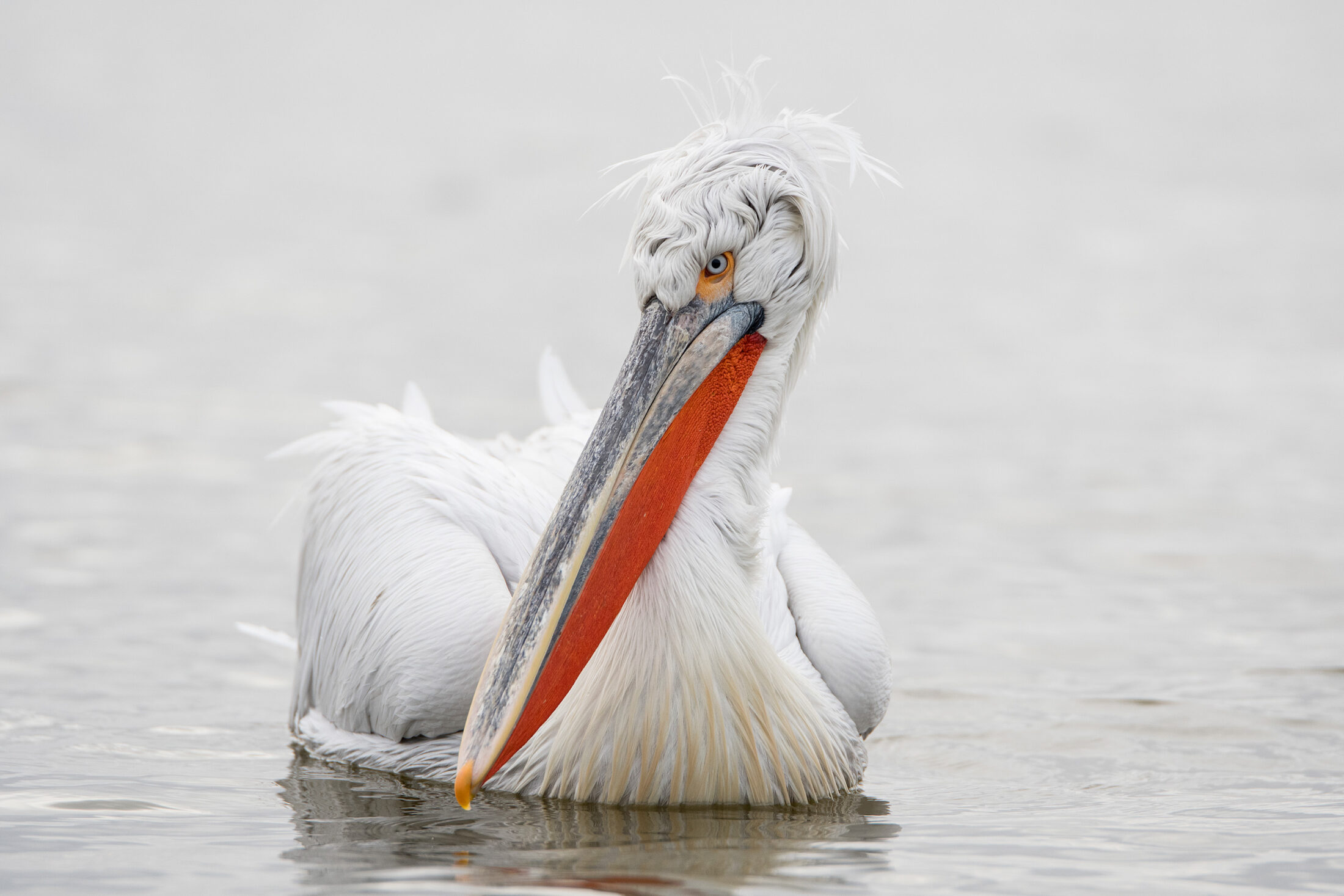
Photo by Francisco Márquez
Courtesy of the Society for the Protection of Prespa
Avian influenza is a conveniently deceptive term. While it accurately describes the viral host, it also neatly sidesteps the origin of the highly pathogenic variant of the disease by telescoping our attention towards birds. Because the root cause of H5N1, expediently forgotten in many news reports about this year’s outbreaks, is directly traceable to humans through our food production systems.
While a reservoir of low pathogenic avian influenza has likely existed in wild bird populations for centuries, rarely manifesting into anything more than minor symptoms in infected individuals, the first confirmation that the low pathogenic virus had resequenced into a severer strain came when a farmed goose was diagnosed with highly pathogenic avian influenza in 1996 in Guangdong, China. Over the following years, numerous outbreaks would be reported in poultry farms across Asia until the first large-scale emergence within wild birds occurred at Lake Qinghai in China in 2005, when over 6,000 birds died after contracting the virus on a body of water where hundreds of thousands of migratory waterbirds seasonally congregate on their journeys.
“Birds are both victims and vectors,” says Dr. Ruth Cromie, lead coordinator of the Scientific Task Force on Avian Influenza and Wild Birds. “The genie truly escaped from the bottle with the first big outbreak in wild birds at Lake Qinghai. And following that outbreak, we saw this virus moving with wild birds into various places. Unfortunately, wild birds have been blamed all over the place, even where poultry and people movements are the cause. If you look at the flyway maps of the world, they’ve been used as ‘proof’ that it was wild birds that have spread the disease, which is a marvelous excuse for having poor biosecurity because you can just blame it on them instead.”
It wasn’t until low pathogenic avian influenza was introduced through lax security controls into the cramped conditions of factory farms, where the virus could rapidly circulate among confined poultry bred to grow unnaturally fast and be sold unfeasibly cheap, that the virus was able to mutate into a highly pathogenic form which is now decimating both wild and domestic birds alike.
“The way we are managing the planet couldn’t be better for creating the settings that generate disease emergence and novel viruses,” says Dr. Cromie, “including the next human pandemic. It used to be that juvenile birds coming off their breeding grounds would be exposed to the low-pathogenic viruses, but now we are seeing these highly pathogenic viruses, with their original source in farmed birds, circulating in the wild. We’re watching new, paradigm-shifting relationships forming—and it’s massively depressing.”
Two flat-bottomed green boats push off from shore, steered through a narrowing channel between reedbeds by young Prespa fishermen dressed in hazmat suits and masks. Each boat carries three large, orange plastic containers, identical to the ones I saw in the car park waiting to be collected. I watch the boatmen gather the birds, hauling them from the water with boat hooks, or lifting them from the islands where they should be nesting. Each time a bird is drawn upwards, its wings fall open, looking from a distance like an angel rising from the lake. But that’s where the comparison ends, because each of the pelicans is then dumped into a large industrial crate.
“It was weird when I was putting them in the box,” says Giorgos Paraskevopoulos, the fisherman I’d spoken to when I’d arrived late to the first retrieval session. That cold, late-winter day, Giorgos’s face was ringed with red lines when he removed the safety suit and mask he’d been wearing all morning while working on the water, his brown hair swept back with sweat. Today, though, he’s relaxed, wearing jeans and a T-shirt as we sit in warm sunshine outside Prespa’s library, where he’s just dropped off his son for a music lesson. “It was as though I was putting a person in their coffin,” he continues. “I went home and my wife said, ‘You’ve changed.’ And how could I not? When you see dead bodies, they might not be people, but they’re still life. They’re still living creatures.”
Each of the boat’s containers holds ten to fourteen Dalmatian pelicans. When the boatmen turn for shore, they ferry dozens of dead birds between them. With each hour of work, the wetland becomes much clearer, but so much smaller in meaning than before.
“I think it’s good for the birds that remain that we’re cleaning up the dead ones,” says Paraskevopoulos, who grew up on the island of Agios Achilleios beside the colony and learned to fish on the lake with his grandfather when he was eight. “I don’t know about the psychology of birds, how all of this seems to them, but when they’re in an environment where they only see carcasses, I believe it affects them. They might not have the understanding that people have, but I believe all living creatures have feelings. If you’re in a pair and you lose your mate—maybe it doesn’t have tears to shed or the words to say it, but that creature feels something.”
“Every year when I’m teaching and showing slides of avian flu outbreak data, it’s the most recent outbreak that is the worst,” says Dr. Ursula Höfle, a veterinary scientist and wild bird disease specialist at the University of Castilla–La Mancha in Spain. “It just gets worse and worse every year. Not every year exactly, but every cycle, because it’s quite a cyclical disease. That cycle used to be every five to ten years, but it’s getting far less than that now.”
This most recent cycle would include the deaths of 8,000 common cranes and numerous other wild birds in December 2021 around a lake in the Hula Valley in northern Israel, a vital wintering site and stopover point for migratory species. It would also include the deaths of approximately 4,000 barnacle geese wintering in the Solway Firth in Scotland that same month, accounting for 10 percent of the goose’s Svalbard breeding population. And it would include, in the late winter and spring of 2022, the eventual deaths of 2,286 Dalmatian pelicans across thirteen wetlands in Greece—1,734 of them in the Prespa colony alone—along with several hundred others elsewhere in Southeastern Europe, from the coastal lagoons of Albania to the Danube Delta in Romania.
Worryingly, as spring became summer in the northern hemisphere, new outbreaks were being recorded on an almost daily basis. Until now, warming temperatures and abundant light would typically lessen the virulence of HPAI to such a degree that it would disappear in sync with the seasons. “We used to only see avian influenza outbreaks in winter,” says Dr. Höfle, “but last year there were cases in May. Unfortunately, we’re probably going to see cases throughout the year.”
In June 2022, just as Dr. Höfle had predicted, outbreaks of avian influenza began increasing dramatically. The National Trust for Scotland announced the deaths of 120 great skuas at the UNESCO World Heritage site of St. Kilda, a remote outcrop of small islands that are home to nearly a million seabirds, including Atlantic puffins, storm petrels, shearwaters, and gannets. Gannets had already been turning up dead in the thousands elsewhere—from Shetland right over to the shores of Nova Scotia and New Brunswick in Canada—including two tagged individuals from Bass Rock off the east coast of Scotland, home to 150,000 northern gannets during the nesting season and the largest colony of their kind in the world. A few days after the deaths of the tagged gannets, avian influenza was confirmed on Bass Rock. Although mortality figures are as yet unknown, contrasting images of the seabird colony from 2021 and 2022 reveal a staggering decline in the number of nesting individuals. By July, avian influenza was being declared responsible for bird deaths around the much warmer southern coasts of England. And in August, 700 black vultures died at a single roosting site in Georgia in the United States, which means that summer can no longer be considered a period of suspension for viral transmission, at least at certain latitudes. We’re now confronting the possibility that HPAI is becoming better adapted to a greater range of climatic conditions (as well as, it appears, to wild birds in general), making its spread all the more unpredictable, and, in all likelihood, utterly devastating.
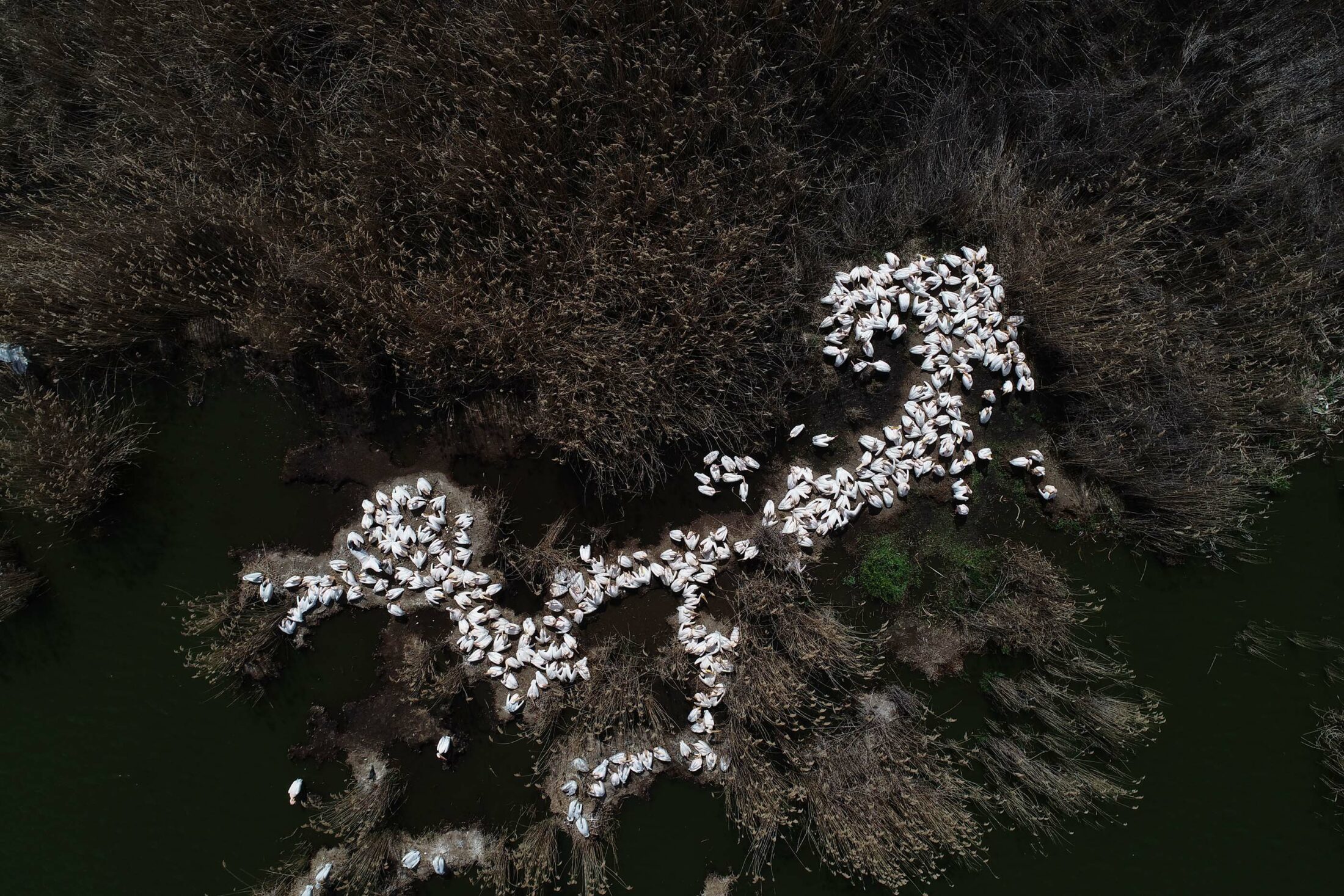
Courtesy of the Society for the Protection of Prespa
When I moved to Prespa in the summer of 2000, Dalmatian pelicans nested in only two of Greece’s wetlands: on the lake beneath the village where I now live and in the Amvrakikos Gulf in the west of the country. That was the extent of their breeding presence here, making them extremely vulnerable to any single cataclysmic event. This is what conservationists fear the most about avian influenza: how its ability to move quickly and unrestrained through whole colonies and congregations of wild birds directly threatens not just the abundance of any given species but the very existence of endangered or geographically restricted populations as a whole.
Prior to the recent HPAI outbreak, the global population of Dalmatian pelicans was believed to be about 9,000 breeding pairs and 27,000 individuals. While Russia and Kazakhstan are the two most important countries in terms of total population numbers, Prespa has, until now, been the bird’s single most significant nesting site, hosting as much as 20 percent of the world’s breeding Dalmatian pelicans. According to local biologists, it will take years for this colony to recover; and given the unpredictability of the viral threat, it may never reach its previous heights again. But despite the devastating toll avian influenza has taken on it, the Dalmatian pelican in Greece is, as a species, better placed to endure and overcome this crisis today than it was just two decades ago, because as the numbers of birds nesting in Prespa gradually increased, rising from roughly 650 pairs in 2000 to more than 1,400 pairs in 2021 (an increase that helped improve the bird’s official IUCN conservation listing from “Vulnerable” to “Near Threatened” in 2017), they began to spread out from these high-altitude lakes and make other places their home. As a result, Dalmatian pelicans now nest in six Greek wetlands instead of just two. And with this expansion—the flow of birds as natural as the currents of water around their nests—the source colony of Prespa has connected these wetlands through their presence, helping to emphasize the value and importance of a network of healthy waters for all.
“Pelicans, for me, are the spirit of the primeval wetland,” says Dr. Catsadorakis, who helped find a way forward for these birds through the years of drought and is now seeing decades of his conservation work with them unraveled almost overnight, “which is a lake containing many secret narrow places, drowning in thick vegetation and hidden corners, with many fish and birds and sounds and scents. And the Dalmatian pelican is there because it needs very specific conditions to nest. When you have wetlands that are frequented by a lot of people, or where a lot of people work in the wetland, you don’t have pelicans nesting there. But in distant wetlands, isolated wetlands, with plenty of fish and clean water, you may have this old spirit of the wetlands. If there are pelicans nesting in a wetland, something is good with the health of this wetland. And we need to have pelicans here and there, even if there are only a few of them, because it means the wetland is moving in the right direction.”
If asked to name the one thing that best captures the essence of pelicans, what it is they’re made for, I would once have said “water”—that it’s to lakes, coasts, and estuaries that they cleave; that it’s to wetlands they express their fidelity. But the living world, as I learned while bird-monitoring for several years in the mountains above the Prespa lakes, is never so simply demarcated or defined, nor reducible to any single, categorizable thing.
Neither species of pelican feeds exclusively from these lakes: they regularly travel to other bodies of water, some, such as Lake Kerkini north of Thessaloniki, as much as 180 kilometers away. While one of the paired pelicans remains on the nest, the other goes in search of food, returning a day or two later with its crop full, then taking its turn on the nest. To reach those distant wetlands—to reach the water I thought of them as being intensely attached to—the birds must first cross the high mountains.
Up there, at 2,000 meters above sea level, I’d watch how those journeying pelicans, in assemblies of as many as a hundred birds at a time, would be released by thermals as easily as a balloon let stray from a child’s hand, conveyed ever upwards on warm air. And the higher they ascended the more unbelievable they seemed to me, until all that could be seen of them were small white gleams as they banked into the sun, like flickers of lightning in daylight. Much that I felt I knew about pelicans shifted during those alpine days; I saw how their lives were hitched to the world in ways far more varied than I’d been able to imagine from the limited vantage point of the lakes. And it was then, when I finally needed binoculars or a telescope to be certain they were still up there at all, that they seemed to me to be made for mountains and a measureless sky just as much as they were wedded to water.
Ancient wetland spirits like the Dalmatian pelican could easily become another kind of spirit: one of loss, a ghost haunting the waters where it once lived.
Many of us are prone to thinking of the world as dividable. As capable of being separated out into elements in the same way that I regarded the pelicans’ experience when I looked at them solely through the lens of wetlands, neglecting their wider presence and the threats they face when in the air: from collisions with poorly sited wind turbines and power lines to the increasingly violent storms they encounter on their journeys. This reductionist way of seeing apprehends whole areas of activity in isolation—such as economics, health, food production, and politics—and delineates the human and the more-than-human worlds so definitively that it makes it feel as though there were two planets alongside each other instead of the one that we share. Such a perspective—embedded especially deep into Western thought through notions of human primacy and the imperative of the profit motive—frequently overlooks the relationships between things. It ignores the networks of connection that link us all, as we’re now witnessing with the devastating spread of avian influenza—because our tendency to discriminate between human beings and the rest of the living world is, ultimately, the underlying reason for its obliterating escalation. And this highly pathogenic virus is merely a symptom of a far greater ill.
“We’re degrading our natural environments,” says Dr. Cromie from the Task Force on Avian Influenza, “weakening them and reducing resilience. Avian influenza is just one new serious threat on top of a lot of other serious local and global threats. And so many of these threats are interrelated. They’re not separate entities; they’re all connected.”
While seabirds such as gannets, terns, and skuas have been overwhelmed by this year’s avian influenza outbreaks, this is only one of many pressures this group of birds has to contend with. Along with the ravages of overfishing, marine pollution, and the proliferation of ghost nets—discarded fishing gear that tangles and traps myriad birds, fish, turtles, and other sea creatures, condemning them all to death—they are suffering intensifying climate change effects. Overheating seas and increasingly extreme weather patterns are resulting in catastrophic mass mortality events known as “wrecks,” when vast numbers of seabirds wash ashore either dying or dead, as witnessed in 2015 when 62,000 common murres beached on the Pacific coast of North America after a marine heatwave drastically altered the food chain dynamics underpinning the health of the species. Ruinous hot spells at sea, like those on land, are the result of tectonic shifts in the planet’s atmospheric composition primarily caused by fossil fuel emissions: the same anthropogenic destabilization of our climate that supercharged Pakistan’s monsoon season this year, leading to devastating floods that left a third of the entire country underwater while killing almost 1,500 people and making homeless a further 33 million. What affects the wild will always, unequivocally, affect us too; there is simply no way of separating ourselves from the changes we’ve made to the world.
“Avian influenza is a classic example,” says Dr. Cromie. “Even if a wild bird may have originally introduced those low-pathogenic viruses, high-pathogenic viruses got out and now they are coming back to bite livestock and humans on the bottom, because we weren’t thinking about the importance of protecting wildlife health.”
As well as infecting both wild and domestic birds, avian influenza can cross the species barrier, as evidenced by its discovery in foxes, ferrets, tigers, otters, and other mammals. In September 2022, the first documented cases of transmission to cetaceans were reported as well, after it was found to have killed a bottlenose dolphin in Florida and a porpoise in Sweden. And while the passage of avian influenza into people remains rare, earlier strains in Asia in particular were responsible for a number of deaths, particularly among those who worked in the poultry trade or who had close contact with infected carcasses. Given the multitude of possibilities for recombination that the virus is being granted as it races through colonies of wild birds and packed industrial units of domestic poultry, there’s every chance that a mutation could emerge that triggers our next catastrophic pandemic.
But focusing on the impact of avian influenza on humans to the exclusion of other lives is endgame thinking: when all you have left to play are just the last few pieces on the board. Given that everything on this planet is interwoven, and each interaction between ourselves, livestock, wildlife, and the wider environment affects others further down the line, the only way to credibly care for human health is to consider all the pieces from the very beginning. And to do that means, firstly, acknowledging that we live in a shared world.
In non-Indigenous societies, health has typically been regarded as sector specific, reflecting how we approach humans, domestic animals, and wild species separately; but the concept of One Health—a unified approach to well-being that has gained considerable traction in recent years, having been embraced by the World Health Organization, the UN Food and Agriculture Organization, and other international bodies, especially since outbreaks of HPAI began occurring more frequently—treats health as indivisible, acknowledging the interdependence of all living things. It recognizes that, as Dr. Cromie says, “we share a lot of pathogens, pollutants, and toxins—and these affect us all.”
Of the dozens of infectious diseases discovered in humans in the past three decades, more than two-thirds of them originated in animals. The risks of such zoonotic spillover are amplified by habitat loss, poor water quality, increased contact at the borders between wild and human communities, environmental degradation, climate aggravations, unhygienic livestock conditions, and biodiversity decline. But by recognizing the intrinsic connection between human health, domestic animal health, and wildlife health, and responding to this entwinement by building resilience into ecosystems as the fundamental building block of thriving societies, we begin to shift notions of well-being, both at the practical and the ethical level, towards the health of the whole. Underscoring these inherent connections is the stark reality of hundreds of thousands of wild birds dying across the planet during this current wave of avian influenza and tens of millions of domestic birds being culled to contain its spread, leading to economic ruin for producers and further misery for industrially kept animals that are sometimes killed in cruelly abhorrent ways. To act as though our food systems—or any other human activity for that matter, from extractive practices such as mining and logging to economic ideologies founded on the myth of infinite growth—were self-contained entities, uncoupled from the living world that is the basis of everything that sustains us, is to imperil our own future as well as that of our wild kin.
It’s mid-summer. I’m standing on the hill above the colonies again, where heat haze is glazing the lakes to a bright shimmer. By now, the skies of Prespa should be turning with the lengthening coils of pelicans, adults and juveniles converging and rising as one through the air. But there are far fewer of them this year than I’ve ever experienced. The wetland is strangely quiet; so unusually empty.
In contrast to the 1,450 pairs of Dalmatian pelicans that nested in 2021, only 90 pairs have nested this year, a number as low as when the colonies were first counted in the late 1960s. But the difficult clearing of dead birds and the subsequent drawdown of the wetland’s viral load gave this many, at least, a chance to successfully breed. Of the 90 young Dalmatian pelicans that will soon take to the summer skies, 20 of them have been tagged and had blood and genetic samples extracted to check for the presence of avian influenza antibodies. It is hoped, too, that these samples will help make sense of why this particular species was so gravely affected while great white pelicans and other waterbirds went entirely unscathed, providing a key to what actions, if any, can be taken to mitigate against the disease in the future.
Seeing so few pelicans around the colonies, it’s easy to think that we’ve been here before; that we’ve returned to a time before Luc Hoffmann first became involved in safeguarding these birds and the SPP began working towards their conservation. And that, of course, is entirely possible, because in an age of extinction, when pressures on wildlife exist on multiple fronts and are increasing in severity, there’s no certainty that any particular species will survive anymore. Ancient wetland spirits like the Dalmatian pelican could easily become another kind of spirit: one of loss, a ghost haunting the waters where it once lived. But while the situation on the Prespa lakes and throughout the bird’s Southeastern European range is unquestionably critical in light of this year’s unprecedented number of deaths, things are vastly different today, too, because the carefully tended groundwork for its protection endures. And like those pelicans traversing the high mountains of the basin, spreading outwards and across the sky, this ecosystem of collaboration connects people as well as wetlands.
“It’s not the number of birds that’s so important,” says Myrsini Malakou, regarding Prespa’s pre-crisis population, “but the system we have established. Don’t be impressed by the number—it’s the system of long-term cooperation of which I’m proud.”
This system has rearranged relationships. When pelicans began dying of avian influenza this spring on Lake Cheimaditida, a lake two hours southeast of Prespa colonized by the birds only seven years earlier as a nesting site, it was local fishermen who went out onto the water on their own to collect the carcasses, asking conservationists what else they could do to help the species—acts that would have been unthinkable just two generations ago, when the Greek government’s reasoning for placing a bounty on a dead bird or an egg was explicitly clear: “Pelicans are to be considered vermin. They feed on fish and constitute a threat to the productivity of the fishing industry. They are the enemies of fishermen.”
“I think people have realized that, generally, birds and nature aren’t our enemy,” says Giorgos Paraskevopoulos of the contemporary relationship between fishermen and wildlife in Prespa. “In the past, the pelican was seen as a competitor. But I don’t see people thinking like that anymore. Okay, they eat some fish, so what? It won’t kill us—and we wouldn’t have got rich on what little they’re eating anyways.”
Above the water, a dozen Dalmatian pelicans glide smoothly in a line through the heating air. I follow their course until they start turning into the light, shining in sequence with the sun in their feathers, lifting above the water with barely a tremble of wings. Watching these survivors, the ones who’ll return again next year to the lake they call home, I remember something else that Paraskevopoulos had said to me during the darkest days of the crisis, when he spent countless cold hours gathering the bodies of dead pelicans from the lake.
“You see a pelican now and you watch it, thinking, I only hope it will live. When they’re common around you, you don’t imagine that you could lose them. The moment when you understand that the population is being increasingly lost, then you see a pelican and you’re thrilled, so you value what you have even more. I hope many people will now appreciate them that much more.”
In an age of thinning forms, when the sum of wild lives on the planet grows smaller by the hour, this rising spiral of Dalmatian pelicans parting the summer air above the lakes is a reminder that we carry within us an extraordinary capacity for change. That our cultures and traditions aren’t closed books but just pages to be turned—pages still to be written in relationship to a shifting world. And that the old spirits—wild, resilient, and still with us—are vital to our shared story.
